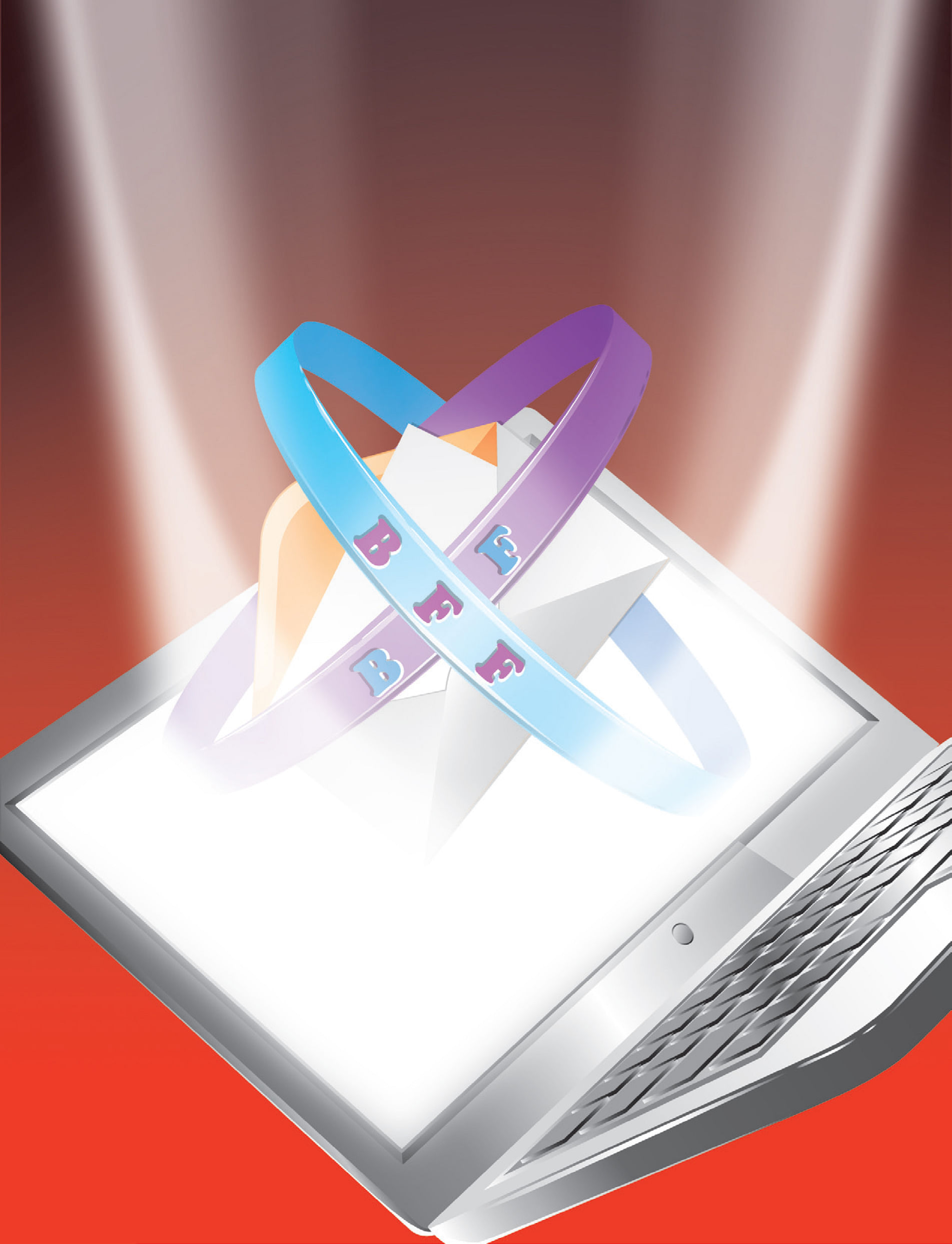One of my best friends is a writer and lecturer from California who began mentoring me 18 years ago. She insisted I consider journalism as a career back when I was still working with radioactive viruses as an undergraduate student in the National University of Singapore. She sent me textbooks to study and even wrote me a letter of recommendation to The Straits Times.
I sent her a gift from my first pay cheque and when her husband died, I helped lay out the songs for his funeral. But we have met exactly once in the history of our friendship, which has been conducted mostly via e-mail and now Facebook and Twitter.
In a world of phishing and catfishing, where online scammers may wear a million different masks to defraud others, I have proof that it is possible to forge a deep, lasting connection with a complete stranger online.
B is the oldest of the friends I have made through e-mail correspondence. There is also Singapore-born and Japan-based J, whom I found five years ago through her fascinating articles about the country. Since April, I've also been learning more about snakes than I ever wished to know from D, an educator in Los Angeles with a radar for reptiles.
The building blocks of all these friendships have been long-form e-mail messages, though when B and I began corresponding over a mutual interest in Buffy: The Vampire Slayer and other fantasy TV shows, instant messaging and Internet telephony were taking off. We had ICQ and Skype and Yahoo Messenger or MSN Messenger if we cared to chat in real-time. We lived in different time zones but a hard-working lecturer and a final-year student stay up late enough that their waking hours overlap.

Eventually we did speak on the phone, paying international dialling rates, but we communicated mostly in long-form e-mails, by which I mean messages of at least 160 words, not letters.
It is the same with J and D, who agree with me that we are "old-school". There is an art to long-form correspondence which is worth preserving even in this era of WhatsApp chat messages and Facebook Messenger.
Chat applications are good to quickly share snapshots of the day or jokes or motivational quotes but lack the emotional intimacy of the long e-mail. When a long e-mail arrives in the inbox, it indicates that someone was not only thinking of you but thought you were worth the time and effort it took to craft their words into coherent narrative.
Whether newsy or funny or stream-of-consciousness recollections of an experience, long-form e-mail messages are a special form of narrative. Reading them is the literary equivalent of watching reality TV or like reading an excellent memoir in instalments.
It is not surprising that B, J and D are all accomplished writers who communicate for a living. Writers love to write to other writers. Anais Nin and Henry Miller were lovers and champions of each other's writing, keeping the flame alive through letters. Edith Wharton and Henry James were critics of each other's work and pen pals long before they were able to socialise regularly.
Re-reading my e-mail history with my friends, I see us graduating from tentative politeness and inquiries about each other's health to genuine concern, comic word paintings and uninhibited explosions of laughter, sadness or anger. Our messages are composed to share news, inform and argue points of view and, yes, sometimes segue into competitions to impress each other.
I treasure these e-mail letters as I would paintings created specially for me. D shares deliberate near-death escapades that sound like Ripley's Believe It Or Not written by P.G. Wodehouse - who was another accomplished correspondent. "One day I was hiking and decided to run down a hill, my sunglasses fell onto a snake," begins one e-mail.
J's e-mail messages range from droll weather reports - "The temperature will climb to a balmy 9 deg C tomorrow" - to sensuous descriptions of autumnal Japan. She makes me laugh with stories about her self-conscious attempt to connect with a favourite manga artist at a cafe or her travails trying to get hold of limited-edition bento boxes issued to promote the anime adaptation of light novel series Ben-To. "You do have to move fast to get the bento you want - and you're not allowed to elbow little old ladies who move at the speed of light," she writes.
I first wrote J gushing e-mails about her columns, then met her for lunch on my first trip to Japan. We have eaten meals together a few times since then but our friendship thrives just as much on the long e-mail messages we exchange about favourite fictional characters - she thinks Katniss Everdeen's selfishness is what makes The Hunger Games more powerful than Twilight - as well as reports about our lives.
B is the critic I write to please. Her editorial and teacherly gaze never flags. When I told her about this column, she suggested things I should add and reminded me to be consistent with naming each friend. "If you plan to also discuss the Japanese lady and the Californian gentleman by name, then you should name me as well... or not," she wrote, despite being so protective of her privacy that she uses the Internet only under a pseudonym.
I have known B and J the longest so not every e-mail is a beautifully typed dissertation on the meaning of life, love and the latest fantasy TV show. There are straight-forward news reports masking deeper hurt - "my grant application was turned down" goes one short e-mail that to me masked a world of hurt and exhaustion after long rounds of essays and interviews.
There are requests for book recommendations or help with editing an article.
If the longer e-mail messages were the bricks that built our relationship, these shorter missives are the cement, the binding material that proves the structure we have built between us has tangible presence in our offline lives.
I lost touch with B some time after her husband died. In my defence, I used an Internet Service Provider and e-mail domain that shut down overnight. My laptop crashed, incinerating all the e-mails on the hard drive. B had changed her e-mail address after her bereavement and I had not yet memorised the new one. On top of that, she had no presence on Facebook or Twitter either.
I should have tried harder to find her but was also hampered by my guilt at not having responded quickly to her last e-mail message.
I have since learnt to dash off an acknowledgement and promise of a longer message in the near future.
Then last year, a miracle happened. B finally joined Facebook to take part in an online memorial for a deceased colleague.
She found me via an article I had written and wrote immediately: "I've found you again... please write back when you can."
Of course I did, with a picture of the journalism textbooks she'd sent me years ago. They still stand on my desk.
Within weeks, another miracle. I received word that I was being sent on assignment to the US.
B flew cross-country to say hello. It felt like a reunion, not a first meeting.
We continue to keep in touch, mostly via social media. Every time I share an article online, it is done knowing that my first mentor and teacher of journalism will be reading with a critical and loving eye.
Short messages on Facebook and Twitter let us feel that we are connected on a daily basis, but every now and then I still send or receive a proper letter via e-mail.
That bold line of text in my inbox makes my heart beat faster every time. There is absolutely nothing as wonderful as receiving new mail from a dear old friend.


